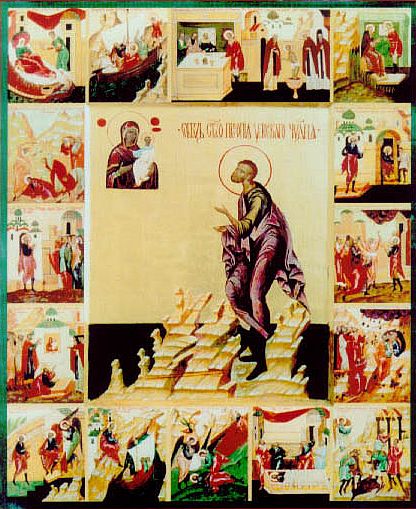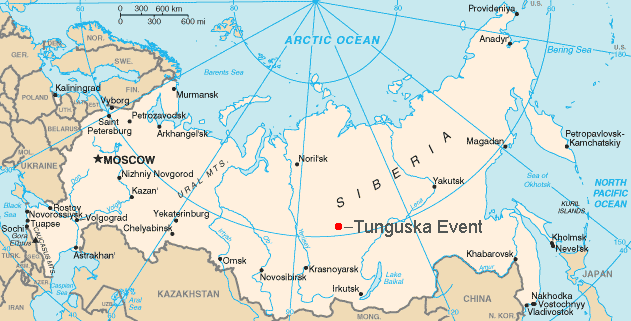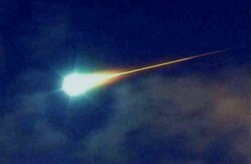|
Veliky Ustyug (meteorite)
Veliky Ustyug (russian: Великий Устюг) is a pseudometeorite that fell on July 3, 1290 (Julian calendar: June 24) in Kotovo village, near the town of Veliky Ustyug, Vologda Oblast, Russia. The fall was witnessed by local priests. The event was later described in the ''Life of Procopius the Righteous'' (russian: Житие Прокопия Праведного; 16th century). The pseudometeorite itself has been lost. Veliky Ustyug is included in the Meteoritical Bulletin Database as a doubtful meteorite. Scientists of the Meteoritics Laboratory of the Vernadsky Institute of Geochemistry presume that the fall of the Veliky Ustyug meteorite is connected to the Tunguska explosion. See also * Glossary of meteoritics This is a glossary of terms used in meteoritics, the science of meteorites. # * 2 Pallas – an asteroid from the asteroid belt and one of the likely parent bodies of the CR meteorites. * 4 Vesta – second-largest asteroid in the asteroid b ... Refer ... [...More Info...] [...Related Items...] OR: [Wikipedia] [Google] [Baidu] |
Russia
Russia (, , ), or the Russian Federation, is a List of transcontinental countries, transcontinental country spanning Eastern Europe and North Asia, Northern Asia. It is the List of countries and dependencies by area, largest country in the world, with its internationally recognised territory covering , and encompassing one-eighth of Earth's inhabitable landmass. Russia extends across Time in Russia, eleven time zones and shares Borders of Russia, land boundaries with fourteen countries, more than List of countries and territories by land borders, any other country but China. It is the List of countries and dependencies by population, world's ninth-most populous country and List of European countries by population, Europe's most populous country, with a population of 146 million people. The country's capital and List of cities and towns in Russia by population, largest city is Moscow, the List of European cities by population within city limits, largest city entirely within E ... [...More Info...] [...Related Items...] OR: [Wikipedia] [Google] [Baidu] |
Kotovo
Kotovo (russian: Котово) is the name of several inhabited localities in Russia. Belgorod Oblast As of 2010, one rural locality in Belgorod Oblast bears this name: * Kotovo, Belgorod Oblast, a '' selo'' in Starooskolsky District Chelyabinsk Oblast As of 2010, one rural locality in Chelyabinsk Oblast bears this name: * Kotovo, Chelyabinsk Oblast, a settlement in Unkurdinsky Selsoviet of Nyazepetrovsky District Ivanovo Oblast As of 2010, three rural localities in Ivanovo Oblast bear this name: * Kotovo, Furmanovsky District, Ivanovo Oblast, a village in Furmanovsky District * Kotovo (Ryabovskoye Rural Settlement), Lukhsky District, Ivanovo Oblast, a village in Lukhsky District; municipally, a part of Ryabovskoye Rural Settlement of that district * Kotovo (Blagoveshchenskoye Rural Settlement), Lukhsky District, Ivanovo Oblast, a village in Lukhsky District; municipally, a part of Blagoveshchenskoye Rural Settlement of that district Kaluga Oblast As of 2010, one rural locality ... [...More Info...] [...Related Items...] OR: [Wikipedia] [Google] [Baidu] |
Vologda Oblast
Vologda Oblast ( rus, Вологодская область, p=vəlɐˈɡotskəjə ˈobləsʲtʲ, r=Vologodskaya oblast, ) is a federal subject of Russia (an oblast). Its administrative center is Vologda. The Oblast has a population of 1,202,444 ( 2010 Census). The largest city is Cherepovets, the home of the Severstal metallurgical plant, the largest industrial enterprise in the oblast. Vologda Oblast is rich in historic monuments, such as the Kirillo-Belozersky Monastery, Ferapontov Monastery (a World Heritage Site) with the frescoes of Dionisius, medieval towns of Velikiy Ustyug and Belozersk, and baroque churches of Totma and Ustyuzhna. Large reserves of wood and fresh water are the main natural resources. History The area of Vologda Oblast was settled by Finnic peoples in prehistory, and most of the toponyms in the region are in fact Finnic. Vepsians, who still live in the west of the oblast, are the descendants of that population. Subsequently, the area was colonized ... [...More Info...] [...Related Items...] OR: [Wikipedia] [Google] [Baidu] |
Julian Calendar
The Julian calendar, proposed by Roman consul Julius Caesar in 46 BC, was a reform of the Roman calendar. It took effect on , by edict. It was designed with the aid of Greek mathematicians and astronomers such as Sosigenes of Alexandria. The calendar became the predominant calendar in the Roman Empire and subsequently most of the Western world for more than 1,600 years until 1582, when Pope Gregory XIII promulgated a minor modification to reduce the average length of the year from 365.25 days to 365.2425 days and thus corrected the Julian calendar's drift against the solar year. Worldwide adoption of this revised calendar, which became known as the Gregorian calendar, took place over the subsequent centuries, first in Catholic countries and subsequently in Protestant countries of the Western Christian world. The Julian calendar is still used in parts of the Eastern Orthodox Church and in parts of Oriental Orthodoxy as well as by the Berbers. The Julian calenda ... [...More Info...] [...Related Items...] OR: [Wikipedia] [Google] [Baidu] |
Veliky Ustyug
Veliky Ustyug (russian: Вели́кий У́стюг) is a town in Vologda Oblast, Russia, located in the northeast of the oblast at the confluence of the Sukhona and Yug Rivers. As of the 2010 Census, its population was 31,665. Veliky Ustyug has a great historical significance and was one of the major cities of the Russian North. It preserved some of the past urban structure and many of the architectural monuments. It has lost its former leading role and is nowadays mostly known for tourism. Location and etymology Veliky Ustyug is close to the confluence of the Sukhona (flowing from the west) and the Yug (from the south) rivers. Downstream from this confluence the rivers form a single waterway known as the Northern Dvina, sometimes referred to as the Little Northern Dvina. The historical center of the town is on the left (high) bank of the Sukhona and, in contrast to many historical Russian towns, there is an embankment along the Sukhona. Dymkovskaya Sloboda and Troit ... [...More Info...] [...Related Items...] OR: [Wikipedia] [Google] [Baidu] |
Procopius Of Ustyug
Procopius of Ustyug (russian: Прокопий Устюжский ''or'' Святой Прокопий Любекский, german: Prokop(ius) von Ustjug und Lübeck; 1243? — in Veliky Ustyug) was a fool for Christ (''yurodivy''), a miracle worker, saint of Russian Orthodox Church, formerly a merchant from Lübeck. He was born in Germany, a Roman Catholic merchant who converted to Eastern Orthodox Christianity during his travels. Though he is sometimes identified as one ''Jacob Potharst'', son of a Lübeck merchant, Procopius' worldly name, surname, date and place of birth are not reliably determined. In 1818 the universal celebration of the saint was established. St. Procopius lived as ''yurodivy'' (russian: юродивый) for 60 years. In 1290 he predicted the fall of meteorite near Veliky Ustyug, as well as tornado and conflagration A conflagration is a large fire. Conflagrations often damage human life, animal life, health, and/or property. A conflagration can begin ... [...More Info...] [...Related Items...] OR: [Wikipedia] [Google] [Baidu] |
Meteoritical Bulletin Database
The Meteoritical Society is a non-profit scholarly organization founded in 1933 to promote research and education in planetary science with emphasis on studies of meteorites and other extraterrestrial materials that further our understanding of the origin and history of the Solar System. Members The membership of the society comprises over 1,000 scientists and amateur enthusiasts from over 52 countries who are interested in a wide range of planetary science topics. Members interests include meteorites, cosmic dust, asteroids and comets, natural satellites, planets, impact events, and the origins of the Solar System. Activities The Meteoritical Society is the organization that records all known meteorites in its '' Meteoritical Bulletin''. The Society also publishes one of the world's leading planetary science journals, ''Meteoritics & Planetary Science'', and is a cosponsor with the Geochemical Society of the renowned journal ''Geochimica et Cosmochimica Acta''. The Society presen ... [...More Info...] [...Related Items...] OR: [Wikipedia] [Google] [Baidu] |
Tunguska Explosion
The Tunguska event (occasionally also called the Tunguska incident) was an approximately 12-megaton explosion that occurred near the Podkamennaya Tunguska River in Yeniseysk Governorate (now Krasnoyarsk Krai), Russia, on the morning of June 30, 1908. The explosion over the sparsely populated Eastern Siberian Taiga flattened an estimated 80 million trees over an area of of forest, and eyewitness reports suggest that at least three people may have died in the event. The explosion is generally attributed to a meteor air burst: the atmospheric explosion of a stony asteroid about in size. The supposed asteroid approached from the east-southeast, and likely with a relatively high speed of about (~ Ma 80). It is classified as an impact event, even though no impact crater has been found; the object is thought to have disintegrated at an altitude of rather than having hit the surface of the Earth. The Tunguska event is the largest impact event on Earth in recorded history, t ... [...More Info...] [...Related Items...] OR: [Wikipedia] [Google] [Baidu] |
Glossary Of Meteoritics
This is a glossary of terms used in meteoritics, the science of meteorites. # * 2 Pallas – an asteroid from the asteroid belt and one of the likely parent bodies of the CR meteorites. * 4 Vesta – second-largest asteroid in the asteroid belt and likely source of the HED meteorites. * 221 Eos – an asteroid from the asteroid belt and one of the likely parent bodies of the CO meteorites. * 289 Nenetta – an asteroid from the asteroid belt and one of the likely parent bodies of the angrites. * 3103 Eger – an asteroid from the asteroid belt and one of the likely parent bodies of the aubrites. * 3819 Robinson – an asteroid from the asteroid belt and one of the likely parent bodies of the angrites. * IA meteorite – an iron meteorite group now part of the IAB group/complex. * IAB meteorite – an iron meteorite and primitive achondrite of the IAB group/complex. * IB meteorite – an iron meteorite group now part of the IAB group/complex. * IC meteorite – an ... [...More Info...] [...Related Items...] OR: [Wikipedia] [Google] [Baidu] |
1290 In Europe
1 (one, unit, unity) is a number representing a single or the only entity. 1 is also a numerical digit and represents a single unit of counting or measurement. For example, a line segment of ''unit length'' is a line segment of length 1. In conventions of sign where zero is considered neither positive nor negative, 1 is the first and smallest positive integer. It is also sometimes considered the first of the infinite sequence of natural numbers, followed by 2, although by other definitions 1 is the second natural number, following 0. The fundamental mathematical property of 1 is to be a multiplicative identity, meaning that any number multiplied by 1 equals the same number. Most if not all properties of 1 can be deduced from this. In advanced mathematics, a multiplicative identity is often denoted 1, even if it is not a number. 1 is by convention not considered a prime number; this was not universally accepted until the mid-20th century. Additionally, 1 is th ... [...More Info...] [...Related Items...] OR: [Wikipedia] [Google] [Baidu] |
Meteorite Falls
A meteorite fall, also called an observed fall, is a meteorite collected after its fall from outer space was observed by people or automated devices. Any other meteorite is called a "find". There are more than 1,100 documented falls listed in widely used databases, most of which have specimens in modern collections. , the Meteoritical Bulletin Database had 1211 confirmed falls. Importance Observed meteorite falls are important for several reasons. Material from observed falls has not been subjected to terrestrial weathering, making the find a better candidate for scientific study. Historically, observed falls were the most compelling evidence supporting the extraterrestrial origin of meteorites. Furthermore, observed fall discoveries are a better representative sample of the types of meteorites which fall to Earth. For example, iron meteorites take much longer to weather and are easier to identify as unusual objects, as compared to other types. This may explain the increas ... [...More Info...] [...Related Items...] OR: [Wikipedia] [Google] [Baidu] |

_(cropped).jpg)




